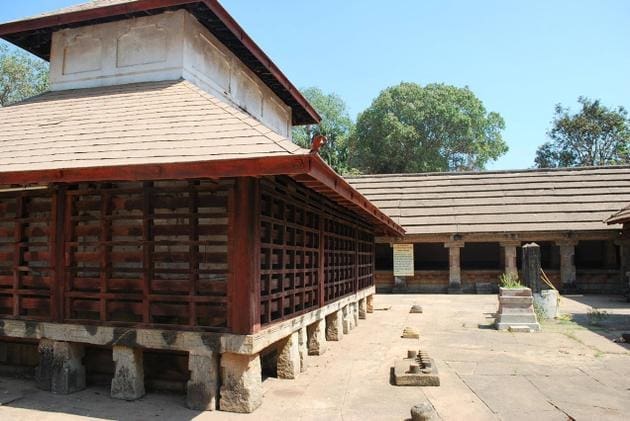
It was an entirely voyeuristic pursuit. An intense desire to peep into the past to let imagination take independent flight. The site din’t let me down and only confirmed that what is memory to mind is history to mankind.
Story within…
The sleepy town of Barkur situated 16 kms from the temple town of Udupi has history as its suitor. However its historical connection does not seem to figure high in the locals’ list of prides, as they go about their routine. But the past surfaces ever so frequently. Though mainly in the most unlikely of places. Posts for a fence or as a support for drawing water. Atleast history finds a place in our modern world.
The past is a neglected character in Barkur. Barren land meets the eye at the fort site where perhaps grandeur was the order of the day. A few stone pillars of varied shapes and forms stand as testimony to those bygone times. Nearby is a deep gorge originally a tank flanked by steps all round. Weeds grow all round and it is said that it bears treasures buried deep within. True or an excuse for neglect no one can tell.
Orphaned, alone
The Jain Basadi though uncared for stands tall and proud. Next to it is a Shiva Temple where there is no priest or gaiety or barriers between God and Man. It still evokes a sense of reverence and peace that touches the soul. Adjoining this holy abode is a structure that is said to house an underground tunnel supposed to reach Kota. Its authenticity is not proved and it only adds to the mystery and flavour of the place.
Barkur historically also bore the name of Barakanur and Barahakanyapur. Under reign of Vijayanagara, Hoysala and Keladi rulers it was a famous commercial centre. It had a mint and coins minted here, were known as Barkur Badyan. Kings like Mayura Verma and Bhootala Pandya also reigned here, which is evident from the various stone inscriptions.

Barkur also known as Parashurama land was under the care of King Rambhoja. One day while tilling the land, the plough accidentally killed a serpent. Hence, Parashurama advised Rambhoja to rectify his sin by conducting a Tulabhar. This Tulabhar gave the island the name Taulava and Ramabhoja gained the name of Tularaja.
Changing times
History has very little to do with the influx of visitors here. The biggest attraction now is the Panchalingeshwara Temple.
Legend
In order to vanquish the Dushtra Khatriyas, Parashurama undertook to travel the continent 12 times. After putting an end to the evil Khatriyas and capturing their lands, Parashurama began considering these lands as his daughter. Therefore, not to violate the land, he did not put the land for living purposes. These lands measured an area of 300 yojanas in length and 100 yojanas in width. The 72 islands were collectively known as Gorashtra and each of these islands was allotted to eminent sages. For instance, Kadri to Kapila Rishi, Kanthavara to Sage Gautham, Polali to Sage Sumedha, Kollur to Sage Jamadgni, Subramanya to Sage Shanmukha and Barkur to Saint Markandeya.
Saint Markandeya observed a severe penance to propitiate Lord Shiva. Happy with his penance, Lord Shiva appeared before him and asked him to construct a temple by installing five lingas. Saint Markandeya likewise sent his disciples to fetch five lingas from Kashi and it took a very long time. So as not to exceed the mahurat-auspicious moment, of installing, the saint, in a hurry picked five lingas from the Sita River. These are the five lingas present in the temple and hence the name Panchalingeshwara.
Pleased by Markandeya’s devotion, Lord Shiva also granted him two wells. One is the Sidharasa well and the Padarasa-mercury well. It was believed that an iron article dipped in this well turned to silver, and when dipped in Sidharasa well into golden.
Both these wells are now in disuse as large stone structures have come up and the Padarasa well has beeb converted into a Nagabana where idols of Naga, the serpent God have been installed and worshiped.
History is desperately in need of a guardian in Barkur.

Be the first to comment